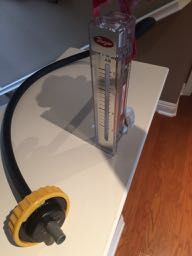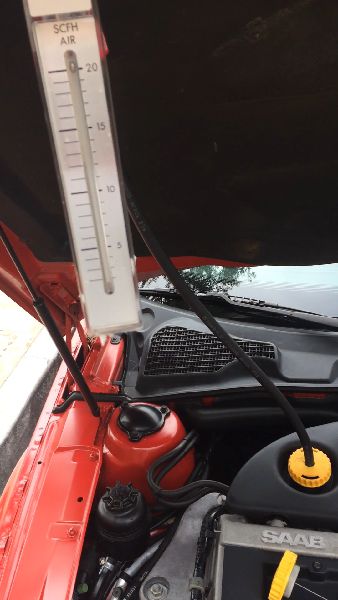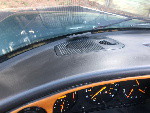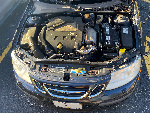The above is an advertisment. If it asks you to download software or create an account, please ignore it.
Site News -
6/4: Advertising Position/Commission Available |
5/10: Members: Log In to See Fewer Ads!
 [General |
Members |
C900 |
9000 |
NG900 & OG93 |
93 |
95 |
NG95 |
99 |
Sonett |
Vintage Models |
Clubs |
Other Cars |
FAQs |
Gifts |
Member Photo Galleries |
Member Directory |
Classifieds |
Manuals |
*Buddy Registry |
*Mileage Registry |
Polls |
What's New |
Raffle |
Photo of the Month |
Sponsors]
[General |
Members |
C900 |
9000 |
NG900 & OG93 |
93 |
95 |
NG95 |
99 |
Sonett |
Vintage Models |
Clubs |
Other Cars |
FAQs |
Gifts |
Member Photo Galleries |
Member Directory |
Classifieds |
Manuals |
*Buddy Registry |
*Mileage Registry |
Polls |
What's New |
Raffle |
Photo of the Month |
Sponsors]
Here's the parts I used...
• 1 Saab oil filler cap
• 3' of fuel line hose, SAE 30R7 3/8" ID x 5/8" OD ($7.59)
• 2 brass fittings (Edelmann 846460) 1/4" NPT x 3/8" Hose Barb ($9.76)
• 1 plastic barbed fitting (John Guest (PI251612S) Tube to Hose Stem 1/2" Stem x 3/8" Hose Barb) $5.49
• 1 Dwyer Rate-Master RMB-51 flowmeter (surplus, $30), 2 - 20 SCFH Air
Start by repurposing your old oil dipstick assembly into a test adapter. Disassemble by depressing and tilting the spring loaded sealing bulkhead to one side and then *carefully* using a screwdriver to pry apart the black plastic bulkhead from the yellow plastic cap. Avoid damaging the rubber ring seal. Retain the spring. Cut the dipstick wire flush with a wire cutter. Then drill holes through the center of both plastic parts: for the yellow cap (5/8" dia.) and the black bulkhead (1/2"). A Dremel with a drum sander may be useful to expand and smooth as req'd. Then, use two-part plastic epoxy to mount the fitting on the black bulkhead, with a fillet to assure no pressure leaks. Allow the epoxy to set and cure. Reassemble the bulkhead, ring, spring, and cap. Then attach one end of the fuel line hose to the barb fitting of the test adapter, and the other to the top port of the flowmeter (which is appropriate for measuring inward flow). The bottom port should be be filtered to prevent ingestion of particulates. See photos below.


Use of the PCV flow tester is straightforward. Attach the adapter to the oil filler pipe, vertically hang the flowmeter from the hood and start the engine. It is possible to correct for non-standard temperature and pressure (but knowledge of actual pressure would require a pressure gauge on the flowmeter outlet).
In NINES #284, Chuck Andrews reported maximum readings at idle (warm engine, no brakes) of nearly 10,000 ccm (cubic centimeters per min.). This is equivalent to about 21 SCFH and guided the sizing of the flowmeter range during my market search. As can be seen in the photo below, the indicator float (reading taken at center of ball) has settled just slightly above 20 SCFH, approximately five minutes after cold start of my '04 9-5 Aero at idle.
->Posting last edited on Tue, 1 Aug 2017 21:34:34.
_______________________________________
'04 9⁵ Aero Sedan (m/t)
'04 9⁵ Aero Wagon (a/t)
---
'99 9⁵ SE (LPT) - donated in '20
Posts in this Thread:
Members do not see ads below this line. - Help Keep This Site Online - Signup
Post a Followup
No Site Registration is Required to Post - Site Membership is optional (Member Features List), but helps to keep the site online
for all Saabers. If the site helps you, please consider helping the site by becoming a member.
StateOfNine.com
 |
SaabClub.com
 |
Jak Stoll Performance
 |
M Car Covers
 |
Ad Available
 |

Random Saabnet.com Member Gallery Photos (Click Image)



This is a moderated bulletin board - Posting is a privilege, not a right.
Unsolicited commercial postings are not allowed (no spam). Please, no For Sale or Wanted postings, SERIOUSLY.
Classifieds are to be listed in The Saab Network Classifieds pages.
This is a problem solving forum for over 250,000 Saab owners, so expect to see
problems discussed here even though our cars are generally very reliable. This is not an anything goes
type of forum. Saabnet.com has been a moderated forum since 1988. For usage guidelines, see the
Saabnet.com Mission and Purpose Page. Please remember that you are
not anonymous. Site Contact | Site Donations | Other Sites by SP -
Poverty2Prosperity.org | Run Club Menlo Park | ScreenBot
Site Members do not see red text instructions, bottom of the page anchor ads, or box ads.
Click here to see all
the Site Membership Benefits!
 [Profile/Gallery]
, Fri, 23 Dec 2016 08:08:10
Members do not see ads below this line. - Help Keep This Site Online - Signup
[Profile/Gallery]
, Fri, 23 Dec 2016 08:08:10
Members do not see ads below this line. - Help Keep This Site Online - Signup

 [Profile/Gallery]
, Fri, 23 Dec 2016 08:08:10
Members do not see ads below this line. - Help Keep This Site Online - Signup
[Profile/Gallery]
, Fri, 23 Dec 2016 08:08:10
Members do not see ads below this line. - Help Keep This Site Online - Signup











